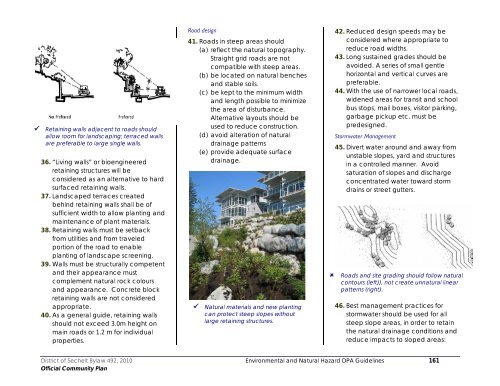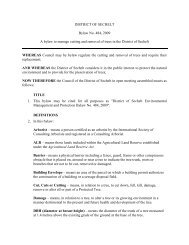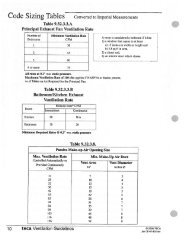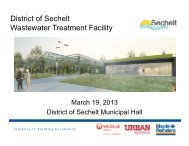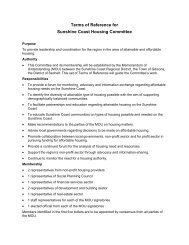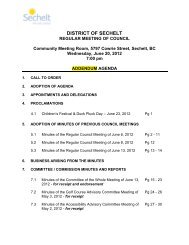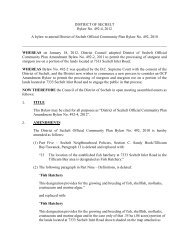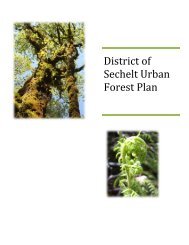DPA 5 Steep Slopes - District of Sechelt
DPA 5 Steep Slopes - District of Sechelt
DPA 5 Steep Slopes - District of Sechelt
Create successful ePaper yourself
Turn your PDF publications into a flip-book with our unique Google optimized e-Paper software.
Retaining walls adjacent to roads should<br />
allow room for landscaping; terraced walls<br />
are preferable to large single walls.<br />
36. “Living walls” or bioengineered<br />
retaining structures will be<br />
considered as an alternative to hard<br />
surfaced retaining walls.<br />
37. Landscaped terraces created<br />
behind retaining walls shall be <strong>of</strong><br />
sufficient width to allow planting and<br />
maintenance <strong>of</strong> plant materials.<br />
38. Retaining walls must be setback<br />
from utilities and from traveled<br />
portion <strong>of</strong> the road to enable<br />
planting <strong>of</strong> landscape screening.<br />
39. Walls must be structurally competent<br />
and their appearance must<br />
complement natural rock colours<br />
and appearance. Concrete block<br />
retaining walls are not considered<br />
appropriate.<br />
40. As a general guide, retaining walls<br />
should not exceed 3.0m height on<br />
main roads or 1.2 m for individual<br />
properties.<br />
Road design<br />
41. Roads in steep areas should<br />
(a) reflect the natural topography.<br />
Straight grid roads are not<br />
compatible with steep areas.<br />
(b) be located on natural benches<br />
and stable soils.<br />
(c) be kept to the minimum width<br />
and length possible to minimize<br />
the area <strong>of</strong> disturbance.<br />
Alternative layouts should be<br />
used to reduce construction.<br />
(d) avoid alteration <strong>of</strong> natural<br />
drainage patterns<br />
(e) provide adequate surface<br />
drainage.<br />
Natural materials and new planting<br />
can protect steep slopes without<br />
large retaining structures.<br />
42. Reduced design speeds may be<br />
considered where appropriate to<br />
reduce road widths.<br />
43. Long sustained grades should be<br />
avoided. A series <strong>of</strong> small gentle<br />
horizontal and vertical curves are<br />
preferable.<br />
44. With the use <strong>of</strong> narrower local roads,<br />
widened areas for transit and school<br />
bus stops, mail boxes, visitor parking,<br />
garbage pickup etc. must be<br />
predesigned.<br />
Stormwater Management<br />
45. Divert water around and away from<br />
unstable slopes, yard and structures<br />
in a controlled manner. Avoid<br />
saturation <strong>of</strong> slopes and discharge<br />
concentrated water toward storm<br />
drains or street gutters.<br />
Roads and site grading should follow natural<br />
contours (left)), not create unnatural linear<br />
patterns (right).<br />
46. Best management practices for<br />
stormwater should be used for all<br />
steep slope areas, in order to retain<br />
the natural drainage conditions and<br />
reduce impacts to sloped areas:<br />
<strong>District</strong> <strong>of</strong> <strong>Sechelt</strong> Bylaw 492, 2010 Environmental and Natural Hazard <strong>DPA</strong> Guidelines 161<br />
Official Community Plan


